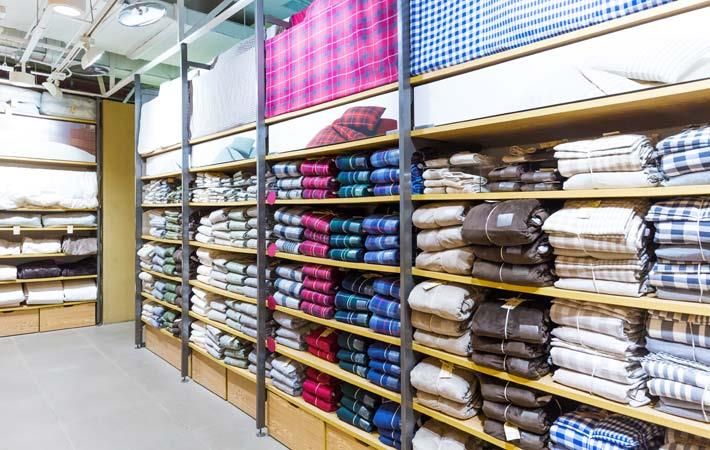Interviews
Your go-to source for news, anytime, anywhere! Insightful industry information from the textile, apparel & fashion world with our news app
Download Now
Your go-to source for news, anytime, anywhere! Insightful industry information from the textile, apparel & fashion world with our news app
Download Now
Your go-to source for news, anytime, anywhere! Insightful industry information from the textile, apparel & fashion world with our news app
Download Now
Your go-to source for news, anytime, anywhere! Insightful industry information from the textile, apparel & fashion world with our news app
Download Now
Some Vietnamese garment units sees decline in orders
13 Aug '19
3 min read

Pic: Shutterstock
Some large garment and textile enterprises in Vietnam, including the Thanh Binh Garment Company, May 10, Viet Tien and Nha Be, have witnessed a decline in orders from clients in the past few months, which will not make it possible for manufacturers to meet the export target this year. The primary reason cited for the decline is the China-US trade war.
Though it was expected that the trade war will help increase orders for Vietnam, the difficult situation of the global economy caused purchasing power to decline and a shift of orders has not been clearly witnessed so far.
According to Pham Xuan Hong, chairman of the Ho Chi Minh City Textile and Garment-Embroidery Association, a shortage of orders has occurred but only at some enterprises, especially in the northern region, and not in the whole industry. In Ho Chi Minh City, members of the association still have received orders as normal.
Thanh Binh Garment Company director Nguyen Van Nam said that his company has three production lines of spandex products with more than 100 workers. But one his local partners unexpectedly cut orders recently, urging him to seek for new sources with low prices or even without profits to keep his workers in job, he said.
According to Truong Van Cam, general secretary of the Vietnam Textile and Apparel Association (VITAS), scarcity of orders is rampant now and the number of orders of several garment and textile enterprises merely accounted for 70 per cent of that in the same period last year.
Vietnam earlier produced an average 2.2 million tonnes of fibre annually, of which 1.5 million tonnes were for export, accounting for 68 per cent of total production. However, since the end of last year, export of fibre has seen uncertainties. This year, fibre consumption has witnessed difficulties. In the first six months of this year, fibre export has merely grown by 1.1 per cent.
Moreover, some countries devaluated their currencies so as to create advantages for export whereas the Vietnamese dong remained stable, causing export products of Vietnam to have higher cost prices, putting export of garment and textile industry at a disadvantage.
Although some free trade agreements were signed, they are merely potential markets and have not showed actual effectiveness, leading to the situation that export products are still imposed import tariffs. This might be the reason that importers shifted orders to other countries, causing a shortage of orders for Vietnamese garment and textile firms, according to a report in a Vietnamese newspaper.
According to VITAS, in the first half of this year, garment and textile exports reached $17.97 billion, up 8.61 per cent over the same period last year. Of which, readymade garments touched $14.02 billion, up 8.71 per cent; fabric hit $1.02 billion, up 29.9 per cent; fibre reached $2.01 billion, up 1.1 per cent; and geotextile fabric rose 16.9 per cent.
The United States remained the largest export market of the industry with a turnover of $7.22 billion, up 12.84 per cent over the same period last year, accounting for 46.9 per cent. Exports to countries in the Comprehensive and Progressive Agreement for Trans-Pacific Partnership hit $2.57 billion, up 11.13 per cent, accounting for 16.71 per cent. Exports to the European Union reached $2.05 billion, up 10.46 per cent, accounting for 13.36 per cent. (DS)
Though it was expected that the trade war will help increase orders for Vietnam, the difficult situation of the global economy caused purchasing power to decline and a shift of orders has not been clearly witnessed so far.
According to Pham Xuan Hong, chairman of the Ho Chi Minh City Textile and Garment-Embroidery Association, a shortage of orders has occurred but only at some enterprises, especially in the northern region, and not in the whole industry. In Ho Chi Minh City, members of the association still have received orders as normal.
Thanh Binh Garment Company director Nguyen Van Nam said that his company has three production lines of spandex products with more than 100 workers. But one his local partners unexpectedly cut orders recently, urging him to seek for new sources with low prices or even without profits to keep his workers in job, he said.
According to Truong Van Cam, general secretary of the Vietnam Textile and Apparel Association (VITAS), scarcity of orders is rampant now and the number of orders of several garment and textile enterprises merely accounted for 70 per cent of that in the same period last year.
Vietnam earlier produced an average 2.2 million tonnes of fibre annually, of which 1.5 million tonnes were for export, accounting for 68 per cent of total production. However, since the end of last year, export of fibre has seen uncertainties. This year, fibre consumption has witnessed difficulties. In the first six months of this year, fibre export has merely grown by 1.1 per cent.
Moreover, some countries devaluated their currencies so as to create advantages for export whereas the Vietnamese dong remained stable, causing export products of Vietnam to have higher cost prices, putting export of garment and textile industry at a disadvantage.
Although some free trade agreements were signed, they are merely potential markets and have not showed actual effectiveness, leading to the situation that export products are still imposed import tariffs. This might be the reason that importers shifted orders to other countries, causing a shortage of orders for Vietnamese garment and textile firms, according to a report in a Vietnamese newspaper.
According to VITAS, in the first half of this year, garment and textile exports reached $17.97 billion, up 8.61 per cent over the same period last year. Of which, readymade garments touched $14.02 billion, up 8.71 per cent; fabric hit $1.02 billion, up 29.9 per cent; fibre reached $2.01 billion, up 1.1 per cent; and geotextile fabric rose 16.9 per cent.
The United States remained the largest export market of the industry with a turnover of $7.22 billion, up 12.84 per cent over the same period last year, accounting for 46.9 per cent. Exports to countries in the Comprehensive and Progressive Agreement for Trans-Pacific Partnership hit $2.57 billion, up 11.13 per cent, accounting for 16.71 per cent. Exports to the European Union reached $2.05 billion, up 10.46 per cent, accounting for 13.36 per cent. (DS)
Fibre2Fashion News Desk – India
Popular News
Leave your Comments
Editor’s Pick
































-Ltd..jpg?tr=w-120,h-60,c-at_max,cm-pad_resize,bg-ffffff)





.jpg?tr=w-120,h-60,c-at_max,cm-pad_resize,bg-ffffff)
.jpg?tr=w-120,h-60,c-at_max,cm-pad_resize,bg-ffffff)






